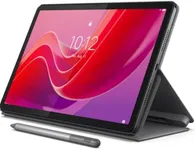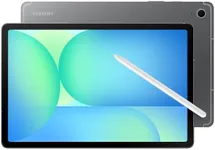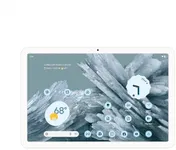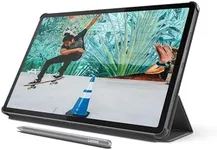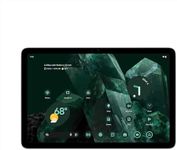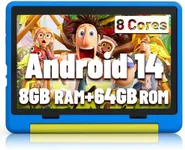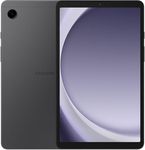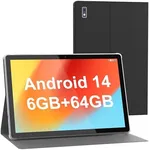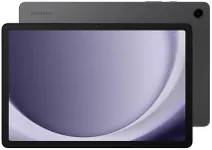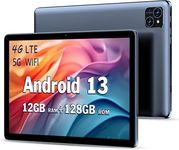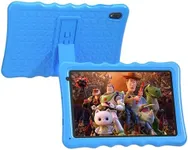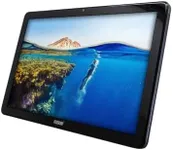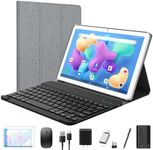Buying Guide for the Best Google Android Tablet
When choosing a Google Android tablet, it's important to consider your specific needs and how you plan to use the device. Whether you're looking for a tablet for entertainment, productivity, or a mix of both, understanding the key specifications will help you make an informed decision. Here are some important specs to consider and how to navigate them to find the best fit for you.Display SizeThe display size of a tablet is measured diagonally in inches and determines how large the screen is. This spec is important because it affects the portability and usability of the device. Smaller tablets (7-8 inches) are more portable and easier to hold with one hand, making them ideal for reading and casual browsing. Medium-sized tablets (9-10 inches) offer a balance between portability and screen real estate, suitable for both entertainment and productivity. Larger tablets (11 inches and above) provide a more immersive experience for watching videos and are better for multitasking, but they can be less portable. Choose a size that fits your usage habits and comfort.
ResolutionResolution refers to the number of pixels on the screen and is usually represented as width x height (e.g., 1920x1080). Higher resolution means sharper and clearer images. This spec is important for activities like watching videos, gaming, and reading text. Standard HD (1280x800) is sufficient for basic tasks, Full HD (1920x1080) offers better clarity for most users, and higher resolutions like QHD (2560x1440) or 4K (3840x2160) are ideal for those who want the best visual experience. Consider how much you value screen clarity and what you will be using the tablet for when choosing the resolution.
ProcessorThe processor, or CPU, is the brain of the tablet and determines how fast and efficiently it can run apps and perform tasks. This spec is important for overall performance. Entry-level processors are suitable for basic tasks like web browsing and streaming. Mid-range processors offer better performance for multitasking and running more demanding apps. High-end processors are designed for intensive tasks like gaming, video editing, and running multiple apps simultaneously. Think about the types of activities you will be doing on your tablet and choose a processor that can handle them smoothly.
RAMRAM (Random Access Memory) is the memory used by the tablet to run apps and manage tasks. More RAM allows for better multitasking and smoother performance. This spec is important for users who run multiple apps at once or use memory-intensive applications. Tablets with 2-3GB of RAM are suitable for basic use, 4-6GB of RAM is good for moderate multitasking and more demanding apps, and 8GB or more is ideal for heavy multitasking and high-performance needs. Consider how many apps you typically use at the same time and choose a tablet with enough RAM to support your usage.
StorageStorage refers to the amount of space available on the tablet to store apps, files, and media. This spec is important for users who download a lot of apps, take many photos and videos, or store large files. Tablets typically come with storage options ranging from 16GB to 512GB or more. For basic use, 32GB may be sufficient, but if you plan to store a lot of media or large apps, consider 64GB or more. Some tablets also offer expandable storage via microSD cards, which can be a cost-effective way to increase storage capacity. Think about your storage needs and choose accordingly.
Battery LifeBattery life indicates how long the tablet can be used on a single charge. This spec is important for users who need their tablet to last throughout the day without frequent recharging. Battery life is usually measured in hours and can vary based on usage. Tablets with 8-10 hours of battery life are common and suitable for most users. If you plan to use your tablet extensively for activities like watching videos, gaming, or working on the go, look for a tablet with longer battery life. Consider your daily usage patterns and choose a tablet that can keep up with your needs.
Operating SystemThe operating system (OS) is the software that runs on the tablet and provides the interface for interacting with the device. Google Android tablets run on the Android OS, which is known for its flexibility and customization options. This spec is important because it affects the user experience and the availability of apps. Android offers a wide range of apps through the Google Play Store and allows for customization of the home screen and settings. Consider whether you prefer the Android ecosystem and its features when choosing a tablet.
ConnectivityConnectivity options determine how the tablet can connect to the internet and other devices. This spec is important for users who need to stay connected on the go. Most tablets offer Wi-Fi connectivity, which is suitable for use at home or in places with Wi-Fi access. Some tablets also offer cellular connectivity (4G/5G), allowing you to use mobile data when Wi-Fi is not available. Additionally, consider other connectivity options like Bluetooth for connecting peripherals and USB ports for transferring data. Think about where and how you will use your tablet and choose the connectivity options that best suit your needs.
CameraThe camera quality on a tablet is measured in megapixels (MP) and affects the clarity of photos and videos. This spec is important for users who plan to take photos, record videos, or use video calling. Front-facing cameras are used for selfies and video calls, while rear-facing cameras are used for general photography. Basic tablets may have cameras with 5-8MP, which are sufficient for casual use. Higher-end tablets may offer cameras with 12MP or more, providing better image quality. Consider how often you will use the camera and for what purposes when choosing a tablet with the right camera specs.
